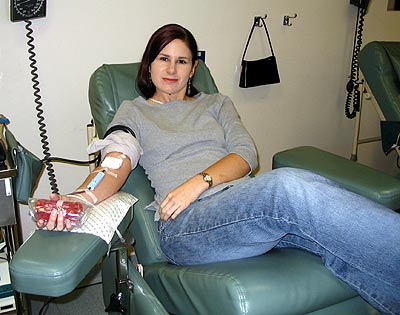Donated Blood May Be Risky – A Study Report
 According to researchers the transfusions making use of donated human blood may do more harm than good as a vital gas allowing oxygen to get to tissues is vanished during storage.
According to researchers the transfusions making use of donated human blood may do more harm than good as a vital gas allowing oxygen to get to tissues is vanished during storage.
Blood can deliver oxygen to tissues due to the existence of nitric oxide that opens vessels allowing blood cells to infiltrate.
A recent analysis by specialists at Duke University Medical Centre in North Carolina has discovered that the nitric oxide in blood conks out directly after exiting the body.
Dr. Jonathan Stamler, senior author of the study said that if vessels fail to open, blockading flow of blood and starving oxygen tissues, the outcome can be a heart failure or even death.
Mr. Stamler said, “It doesn't matter how much oxygen is being carried by red blood cells, it cannot get to the tissues that need it without nitric oxide.”
Dr. Timothy McMahon, another scientist, said that there were clear indicants of nitric oxide exhaustion within three hours of blood getting out the body.
He said, “Of concern to us is that nitric oxide levels become depressed soon after collection, suggesting that even 'fresh blood' may have adverse biological characteristics.”
But, the latest study has also detected that artificially adding the gas to stored blood before blood transfusion could solve the problem and restore blood flow to normal.
Dr Stamler said, “When we gave stored blood it couldn't increase blood flow properly. However, after replacing the nitrous oxide, blood flow to the heart was increased, reflecting increased blood vessel dilation. This suggests that adding nitrous oxide to human banked blood could theoretically improve its ability to dilate blood vessels and thus prevent heart attacks and even death in patients.”
Dr, Stamler added that blood transfusions were still imperative as they "could be life-saving" but he also demanded large-scale clinical examinations in human beings, adding that there was disbelief that transfused blood could be injurious.